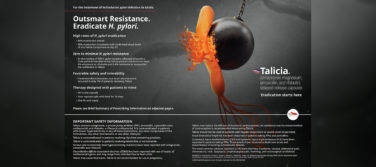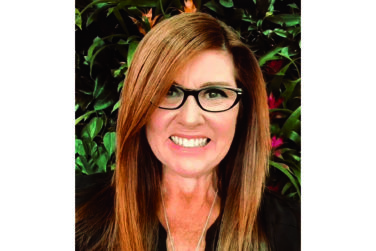PM360 recognized the outstanding ingenuity of even more pharma marketers in 2017 by awarding both Gold and Silver Initiative winners. Our winners took on some of the health industry’s greatest challenges by utilizing cutting edge technology, impressive advertising innovations, and unique perspectives. Take our Gold Interactive Marketing Campaign Winner, In My Eyes. Regeneron and Intouch Solutions found a brand-new way to raise not only awareness, but understanding of a disease that comes with many hardships. They used stunning new technology to create an augmented reality app that allows anyone with a smartphone to experience their world as a retinal disease patient would. That was just one example of a campaign focused on inspiring empathy.
Shire also focused on a new and effective way to spark empathy with the Gold winner for HCP Education. Shire trained 12 Patient Ambassadors to share their emotional struggle with Binge Eating Disorder (B.E.D.) with HCPs, who were moved to listen to their own patients and ask those appropriate questions that might help identify and diagnose other B.E.D. patients.
Meanwhile, Confideo Labs & Boehringer Ingelheim Biosimilars teamed up to accomplish one of the most radical technology feats to become the Interactive Marketing Program Silver Winner. With their VR program, investors took a tour of the biosimilar manufacturing labs with the help of stunning, state of the art animation and beautiful 3D visualizations.
Exact Sciences Corporation and precisioneffect found a different way to bring an experience to the consumer. Our 2017 Direct-to-Consumer Gold Winner has a clear goal of eliminating colon cancer, the most preventable and yet most fatal cancer in America. With Cologuard, patients can easily screen for colon cancer at home without the discomfort of visiting a doctor for an unpleasant exam. Exact Sciences and their adorable mascot, Lil CG, are battling colon cancer one test at a time.
Ultimately, all of our Initiative winners disrupted the pharma market, pushed themselves and their teams to create something wow-worthy, and seriously impressed our judges with new technology and ideas. Each of these programs also had a larger purpose in mind, a goal that would seriously help a group of people in some way. It’s this dedication to the patient that brings these exciting new works to life and allow us to celebrate some truly admirable Initiatives.
spencer® (HAP Innovations, LLC, The Bloc)
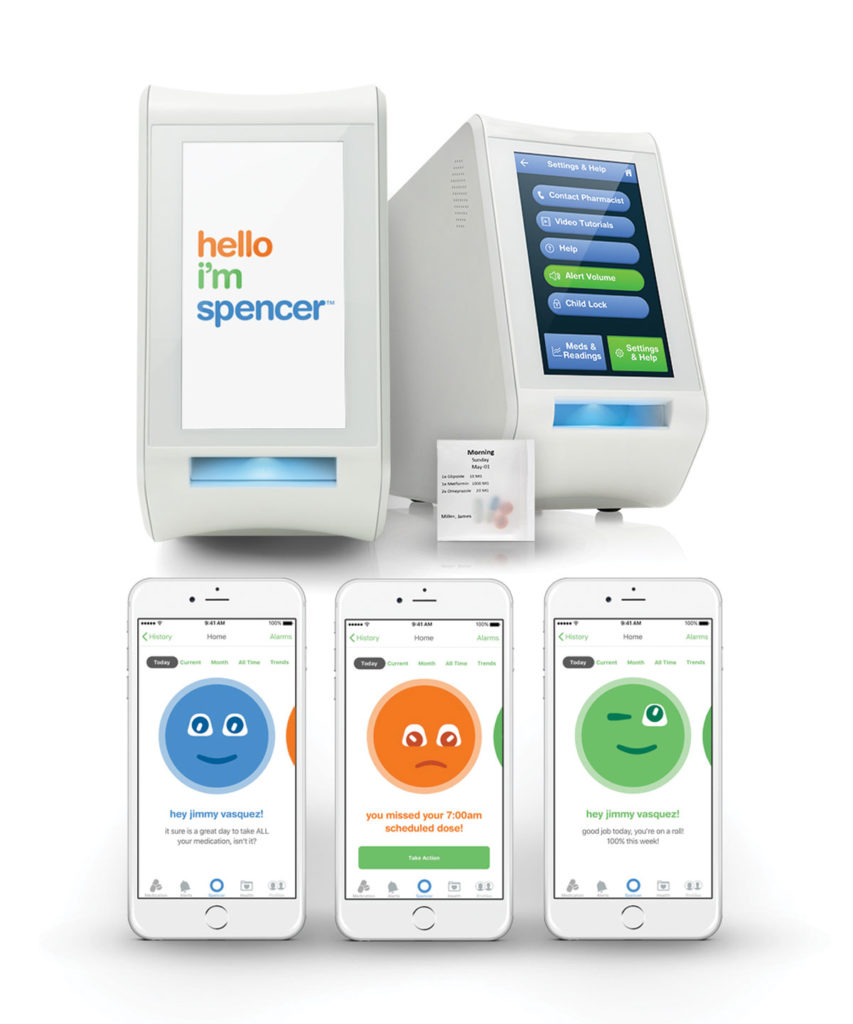 It’s not easy for elderly patients to take their medicine correctly. Many are taking various medications for multiple chronic diseases, which can be confusing. Medical nonadherence has reached crisis levels in America, due to the overwhelming and isolating nature of the prescription drug market. This is why HAP Innovations developed a pill-dispensing platform. Acting as an in-home medication dispenser and connected care hub, as well as a way for patients to connect to caregivers and pharmacists with notifications, alerts, and support, it directly combats nonadherence.
It’s not easy for elderly patients to take their medicine correctly. Many are taking various medications for multiple chronic diseases, which can be confusing. Medical nonadherence has reached crisis levels in America, due to the overwhelming and isolating nature of the prescription drug market. This is why HAP Innovations developed a pill-dispensing platform. Acting as an in-home medication dispenser and connected care hub, as well as a way for patients to connect to caregivers and pharmacists with notifications, alerts, and support, it directly combats nonadherence.
HAP Innovations knew it wouldn’t be enough to just enhance the data-driven process; they had to also make it friendly and supportive to elderly patients who struggle to adapt to new technology. So they partnered with The Bloc early in the development process to help create a brand identity for their advanced pill dispenser, humanizing it to make it more accessible.
The Bloc came up with a relevant human name, spencer, along with a face and personality, bringing warmth to a complex interchange of data, communications, and medication. The face also acted as an emoticon that communicated three states of compliance: The rested state, the happy state, and the displeased state. PM360’s judges agree that spencer is “friendly, inviting, and informative,” as well as a “face of insights, support, and encouragement.”
In just a short amount of time, spencer has generated tons of positive feedback and has led to greater engagement from elderly patients, helping them stay on track with their medications and live healthier lives.
Fresenius Kabi Augmented Reality (Fresenius Kabi, AbelsonTaylor)
 Fresenius Kabi needed a way to engage as many attendees at the American Society of Health-System Pharmacists (ASHP) Midyear Clinical Meeting—the largest gathering of pharmacists in the world—as possible. With the goal of sparking product-focused conversations and new sales leads, Fresenius Kabi and AbelsonTaylor developed an augmented reality app that allowed users to interact with their portfolio rather than simply read it.
Fresenius Kabi needed a way to engage as many attendees at the American Society of Health-System Pharmacists (ASHP) Midyear Clinical Meeting—the largest gathering of pharmacists in the world—as possible. With the goal of sparking product-focused conversations and new sales leads, Fresenius Kabi and AbelsonTaylor developed an augmented reality app that allowed users to interact with their portfolio rather than simply read it.
Booth structures sported decals that attendees could scan with a supplied iPad, revealing digital product features and key facts. As attendees “collected” products virtually, a dollar amount on the iPad screen would increase. For each product “collected,” Fresenius Kabi donated funds to the ASHP Student Foundation—allowing pharmacists to support future members of their industry.
The combination of clever technology and charity incentives was a great success. Not only did the app keep users at the Fresenius Kabi booth for over five minutes, it racked up $20,000 for the ASHP Student Foundation, a socially responsible bonus that the PM360 judges were particularly impressed with.
APOQUEL (Zoetis, Ogilvy CommonHealth Worldwide)
 Dogs itch—it’s part of being a dog. But often times, your pooch’s itchiness can be a serious dermatological condition. Zoetis knows many dogs need a prescription solution for their allergic itch, but many dog owners do not. Knowing that dog owners are extremely social and digitally savvy—always seeking advice on the internet—Zoetis and Ogilvy CommonHealth Worldwide created a website for APOQUEL to target dog owners geographically. A “from the mouths of dogs” campaign aimed to raise awareness of allergic dog itch and the need for medical treatment.
Dogs itch—it’s part of being a dog. But often times, your pooch’s itchiness can be a serious dermatological condition. Zoetis knows many dogs need a prescription solution for their allergic itch, but many dog owners do not. Knowing that dog owners are extremely social and digitally savvy—always seeking advice on the internet—Zoetis and Ogilvy CommonHealth Worldwide created a website for APOQUEL to target dog owners geographically. A “from the mouths of dogs” campaign aimed to raise awareness of allergic dog itch and the need for medical treatment.
Conversation on the site focused on who in the world could help a dog out with his itch. As a source to have a conversation about this, the site was empathetic to the issue, providing not only the product benefits but educating the dog owners of signs and symptoms of itch, to help better identify the problem.
Not only was APOQUEL effectively advertised, but owners were made more aware about how to identify if their dog had an allergic itch. The APOQUEL site captured between 89% and 90% of new visitors, who spent at least one minute or more on the site. This success sparked the beginning of a national campaign, which will help more owners stop wasting time and money on OTC remedies and help more good dogs find the itch relief they deserve.
CREON.com (AbbVie, Intouch Solutions)
 Exocrine Pancreatic Insufficiency (EPI) is a chronic and often debilitating condition with no cure that prevents the body from producing enough natural enzymes to break down food and absorb vital nutrients. EPI is caused by other conditions including Cystic Fibrosis (CF), chronic pancreatitis (CP), pancreatectomy.
Exocrine Pancreatic Insufficiency (EPI) is a chronic and often debilitating condition with no cure that prevents the body from producing enough natural enzymes to break down food and absorb vital nutrients. EPI is caused by other conditions including Cystic Fibrosis (CF), chronic pancreatitis (CP), pancreatectomy.
Patients with EPI require lifelong Pancreatic Enzyme Replacement Therapy (PERT) to improve the breakdown and absorption of vital nutrients that EPI prohibits when left untreated. AbbVie manufactures and markets CREON (pancrealipase), the leading PERT.
CREON.com accomplishes the following goals to guide patients and their caregivers toward immediate and long-term EPI management:
- Ensure proper onboarding by driving awareness and understanding of this manageable condition across all CREON stakeholders, regardless of demographic or co-condition.
- Drive ongoing symptom monitoring and help patients take command of their care and have proactive conversations with their care team.
- Empower patients with easy-to-understand and high-recall content to optimize their experience.
- Promote patient support program offerings and continue to add value for repeat visitors.
Cologuard (Exact Sciences Corporation, precisioneffect)
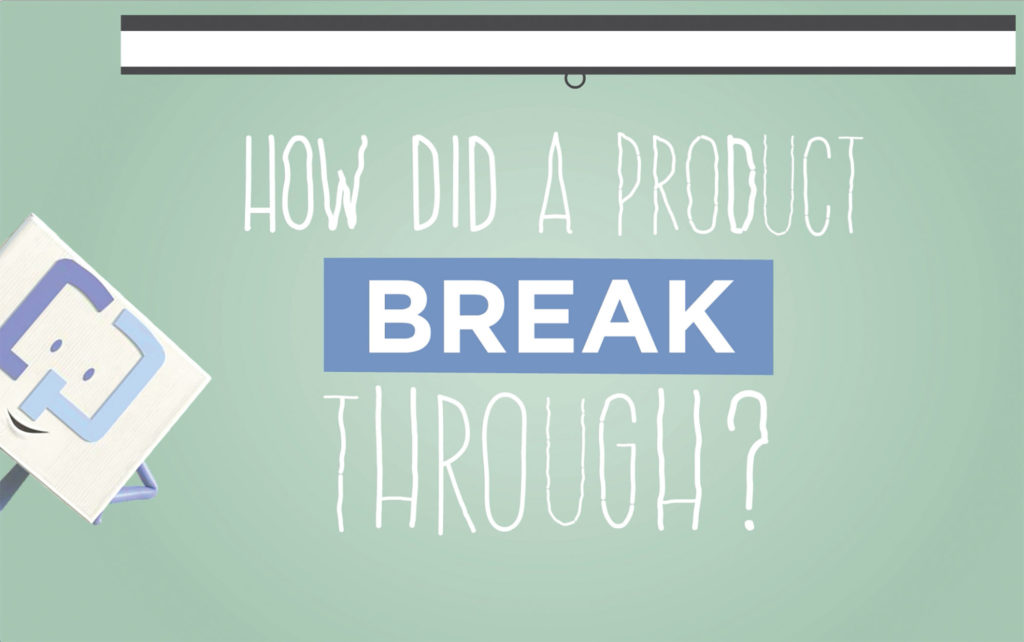 Here’s a disturbing truth: Colon cancer is the most preventable, yet least prevented cancer, killing 50,000 Americans every year. Research conducted by Exact Sciences—creators of Cologuard, the novel non-invasive home screening test—revealed some of the reasons so many adults over the age of 50 avoid colon cancer screening. It’s not just discomfort around colonoscopy (which is huge) but they’re incredibly busy, with work or transitioning to new passions and do not consider colon cancer a priority on their healthcare “to-do” list.
Here’s a disturbing truth: Colon cancer is the most preventable, yet least prevented cancer, killing 50,000 Americans every year. Research conducted by Exact Sciences—creators of Cologuard, the novel non-invasive home screening test—revealed some of the reasons so many adults over the age of 50 avoid colon cancer screening. It’s not just discomfort around colonoscopy (which is huge) but they’re incredibly busy, with work or transitioning to new passions and do not consider colon cancer a priority on their healthcare “to-do” list.
That insight led to the simplicity of the Cologuard ad campaign. In his 60-minute commercial, “Lil CG” hits on the accuracy and high science of DNA technology, but his key message is how easily one can potentially protect against this deadly cancer.
Since 2015, more than 450,000 patients have received a convenient colon cancer screening kit at their door in a clean, consumer-friendly box sporting a nifty logo (the letter’s CG gesture to the shape of the colon). Lil CG has pushed sales up 135% from 104,000 in 2015 to 244,000 in 2016, appearing not only on TV but in website ads, banners ads, physician offices, and posts for his 21,000 Facebook followers. PM360 judges agreed that Lil CG could be exactly what Exact Sciences needs to eradicate colon cancer, one kit at a time. In fact, 40% of the patients who have ordered Cologuard have never had a colon cancer screening done before, meaning that Lil CG is on his way to achieving the goal of mainstreaming colon cancer prevention.
“Doors” (Takeda Pharmaceuticals USA, Pathway, BBDO NY)
 Entyvio faced the daunting challenge of making its presence known as a drug that specifically treats ulcerative colitis (UC) or Crohn’s disease (CD), in a market where Humira and Remicade reigned as the drugs that treated all conditions associated with inflammatory bowel disease (IBD).
Entyvio faced the daunting challenge of making its presence known as a drug that specifically treats ulcerative colitis (UC) or Crohn’s disease (CD), in a market where Humira and Remicade reigned as the drugs that treated all conditions associated with inflammatory bowel disease (IBD).
To attract those patients who already trusted Humira and Remicade, Takeda created a campaign that talked with patients about their struggles rather than at them. The “Doors” campaign presented images of bathroom doors with highly relevant situations—date night, dinner party, and the big game—identifiable and relatable for target audiences. If they hadn’t been in this exact situation with this exact door, they had been in one like it with a similar door. And they remembered it well.
Entyvio’s understanding of their patients paid off. Their analytics show that awareness of UC and CD as conditions separate from IBD increased 75% and first choice/serious consideration increased by 52% (UC) and 79% (CD) within the first four months of the DTC launch.
Firazyr “Mantra” (Shire, Dudnyk)
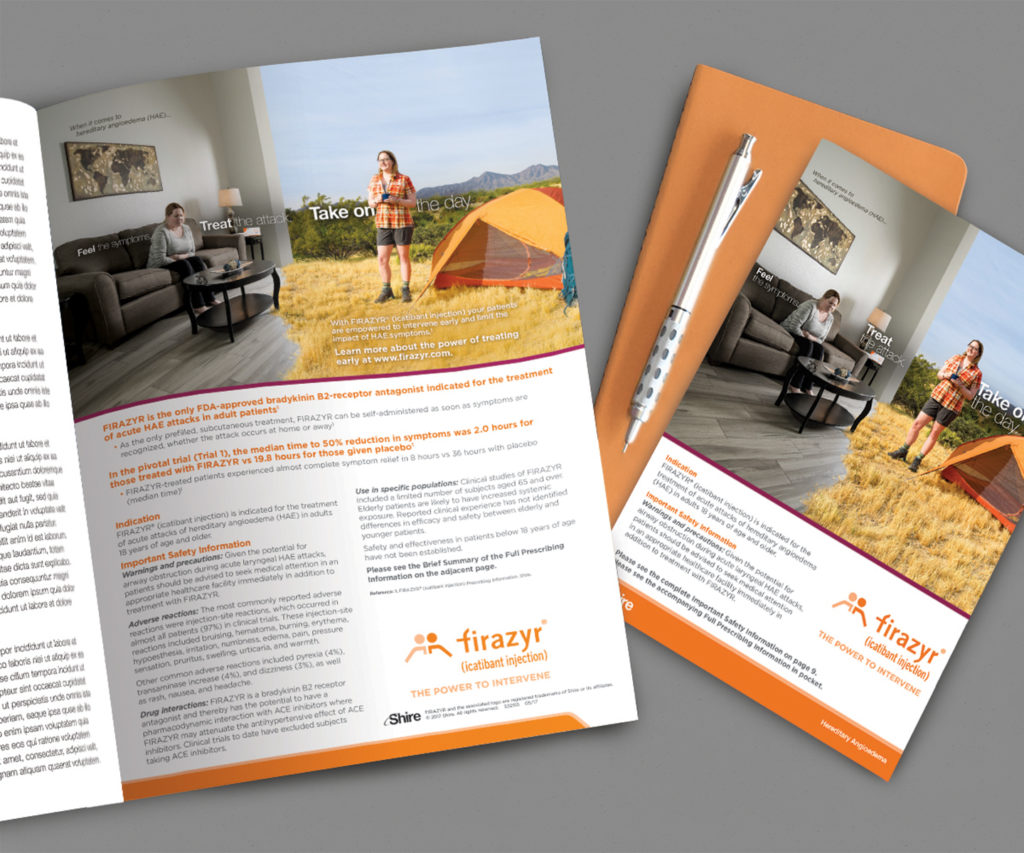 Hereditary angioedema (HAE) is a rare disease associated with constant fear of sudden, painful, potentially fatal swelling attacks of the face, extremities, abdomen, or throat. Firazyr is an on-demand, portable treatment, and about 35% of patients carry it with them at all times in case an acute attack occurs. Attack resolution is more successful when the attacks are treated soon after symptoms appear, but the perceived burden of cost and accessibility has caused patients to wait and assess the severity of their HAE attack before using Firazyr—often on their physicians’ instructions.
Hereditary angioedema (HAE) is a rare disease associated with constant fear of sudden, painful, potentially fatal swelling attacks of the face, extremities, abdomen, or throat. Firazyr is an on-demand, portable treatment, and about 35% of patients carry it with them at all times in case an acute attack occurs. Attack resolution is more successful when the attacks are treated soon after symptoms appear, but the perceived burden of cost and accessibility has caused patients to wait and assess the severity of their HAE attack before using Firazyr—often on their physicians’ instructions.
Shire worked with Dudnyk on a campaign that features a real HAE sufferer with an unmistakable expression of fear as she begins to feel the symptoms of an attack. An image of Firazyr at the bottom of the page marks the transformation from dark to bright, indicating the power of the medication. The campaign’s mantra: “Feel the symptoms. Treat the attack. Take on the day.” The use of a real HAE patient was compelling for both HCPs and patients. One patient said, “Someone could have pulled this ad straight from my life.” This helped Shire convey the simple, clear message: Don’t wait until it’s too late.
Field reps have been amazed at the emotional reaction patients have to the ad and their willingness to admit that they need to reevaluate how long it takes them to decide to treat an attack. The realistic imagery resonates with providers as well. Imagining their patients stuck alone in their homes, confused and fearful, has changed the way they approach discussions about treatment practices for HAE. Our judges summed up this campaign well: “Powerful.”
Bydureon: “BYDUREON IT!” (AstraZeneca, Heartbeat)
 The “BYDUREON IT!” campaign combines the exceptional television advertising of a uniquely formulated diabetes treatment with resources for patient self-care in a market flooded with promises of a “golden” drug. An overly competitive market had infantilized consumers, promising them quick results and offering no help in the daunting task of completely overturning lifestyle habits to better manage blood sugar levels.
The “BYDUREON IT!” campaign combines the exceptional television advertising of a uniquely formulated diabetes treatment with resources for patient self-care in a market flooded with promises of a “golden” drug. An overly competitive market had infantilized consumers, promising them quick results and offering no help in the daunting task of completely overturning lifestyle habits to better manage blood sugar levels.
AstraZeneca and Heartbeat not only brought attention to an unrecognized, yet powerful product in a saturated market, but spoke truth to power about the importance of patient responsibility when managing a life-changing condition. “BYDUREON IT” provided a unique how-to guide to changing eating and exercise habits across print, digital, CRM, social, and search mediums while meeting its competition in the celebrity-dominated television realm.
Supporting Pharmaceutical Manufacturers in the New Age of Digital Care (Think Patients, Pharmacy Healthcare Solutions Inc.)

 Think Patients has long championed a greater understanding of EHRs/EMRs as part of their clients’ overall strategies, both for improving provider and patient experiences and for contributing to the success of their clients’ businesses. But ultimately, any product’s bottom line is tied to having prescriptions written, and when a product appears unclearly (or not at all!) in a prescriber’s EHR—a situation that occurs far too often—this can have a dramatic impact on the success of that product in today’s competitive markets.
Think Patients has long championed a greater understanding of EHRs/EMRs as part of their clients’ overall strategies, both for improving provider and patient experiences and for contributing to the success of their clients’ businesses. But ultimately, any product’s bottom line is tied to having prescriptions written, and when a product appears unclearly (or not at all!) in a prescriber’s EHR—a situation that occurs far too often—this can have a dramatic impact on the success of that product in today’s competitive markets.
Recognizing this need, Think Patients built a comprehensive, innovative solution that both prepares new products for launch and monitors for and helps to correct data issues and delays in drug compendia, EHRs, and e-prescribing systems after launch. Partnering with Pharmacy Healthcare Solutions Inc., Think Patients helps clients prepare compendia communications by predicting how a product will appear in EHRs and recommending a strategy to help ensure an accurate drug listing. Then, once launched, the team monitors the product’s compendia listings and predicts and tracks downstream availability in EHRs.
The result of this process is a client with the highest chances of a smooth product launch in the digital world. Think Patients’ clients are often adjusting their launch strategies and forecast estimates 6 to 12 months before FDA approval, preventing listing errors and misjudgment of product availability, and are avoiding the resource-consuming process of fixing errors after launch. Through proactive monitoring for data errors and early detection of product listing concerns, Think Patients’ clients have saved and recaptured millions of dollars by preventing lost sales—resulting in numerous successful product launches. They have also enhanced provider experience, patient care, and brand success by increasing their enterprise knowledge of the digital tools their customers are using every day.
ScriptGuide @Hospital (ConnectiveRx)
 Hospital discharge is a crucial moment in the continuation of a patient’s care. In most cases, a major event has just occurred for the patient, such as the diagnosis of a new or worsening condition or treatment for an urgent issue.
Hospital discharge is a crucial moment in the continuation of a patient’s care. In most cases, a major event has just occurred for the patient, such as the diagnosis of a new or worsening condition or treatment for an urgent issue.
Despite receiving instructions on how to properly continue therapies, patients still exhibit poor prescription adherence and hospital readmission ultimately costs hospitals billions of dollars a year. Additionally, with the increasing restrictions pharmaceutical representatives face with access to doctors within hospital systems, it becomes even more difficult to inform physicians about valuable information and resources available to help their patients.
Research shows that many hospital readmissions can be avoided through discharge process improvements. ConnectiveRx integrates with a hospital system’s EHR and attempts to solve this problem with ScriptGuide @Hospital—a personal, printed message designed to deliver coupons and copay assistance for prescribed medications, along with targeted patient education based on their diagnoses. The program is currently in its pilot run and will be implemented in more acute care facilities in 2018.
VYVANSE Binge Eating Disorder Patient Ambassador Program (Shire, Snow Companies)
 Shire realized that inspiring change in HCPs would take more than spreading awareness about Binge Eating Disorder (B.E.D.). Change would require a demonstration of the real impact B.E.D. has on everyday lives, inspiring an understanding that would not offend or accuse the audience. Thus, the VYVANSE Binge Eating Disorder Patient Ambassador Program was created, reaching out to patients who would bring a face to a misunderstood disorder and urge HCPs to listen to their patients and ask those appropriate questions that might help identify and diagnose other B.E.D. patients.
Shire realized that inspiring change in HCPs would take more than spreading awareness about Binge Eating Disorder (B.E.D.). Change would require a demonstration of the real impact B.E.D. has on everyday lives, inspiring an understanding that would not offend or accuse the audience. Thus, the VYVANSE Binge Eating Disorder Patient Ambassador Program was created, reaching out to patients who would bring a face to a misunderstood disorder and urge HCPs to listen to their patients and ask those appropriate questions that might help identify and diagnose other B.E.D. patients.
Twelve patient ambassadors, trained on legal and regulatory guidance, reached thousands of HCPs with their authentic and emotional stories. Stories focused on the impact B.E.D. has on the patient’s friendships and family, experience talking to doctors who may not have known about B.E.D., and finally the relief and joy in receiving their diagnosis. Here’s how they were received:
“Hearing the patient share her story made me think of a patient that I am currently treating and the story really shed light on how important communication is.”
“What a remarkable experience the patient has gone through. You really can’t imagine what someone is going through without asking the right questions.”
With this type of praise, there’s no question as to the value and effectiveness real patient stories can have on inciting change in the HCP community. This program highlights empathy’s indispensable role in reshaping how the pharma industry works in the interest of patients.
Opioid IQ (Collegium Pharmaceutical, Concentric Health Experience)
 Collegium Pharmaceutical was launching a tamper resistant opioid formulation in the midst of an abuse epidemic sweeping the nation and dominating the pain management conversation. What the category needed was honest, authentic conversation about the fine line between use and abuse.
Collegium Pharmaceutical was launching a tamper resistant opioid formulation in the midst of an abuse epidemic sweeping the nation and dominating the pain management conversation. What the category needed was honest, authentic conversation about the fine line between use and abuse.
OpioidIQ.com asked some of the leading authorities in pain management to tell the whole story on opioid use and abuse—without pulling any punches. The conversational style was very well received by the HCP community, attracting 3,100 users in the first week (that’s more than half of all pain specialists in the U.S.!) using a series of brief, dramatic interviews with doctors all too familiar with the struggles facing opioid prescribers and users. Additionally, the site offers a range of information pertinent to the thorny and emotional subject of drug abuse, ranging from patient management and prescription practices to new drugs and resources on the horizon.
Most impressive is how OpioidIQ.com has proven its utility by drawing users back to the site while continuing to expand the audience, practically tripling its base of participators in only two months.
In My Eyes AR/VR App (Regeneron, Intouch Solutions)
 The onset of retinal disease can be daunting for patients and their families. Many are confused about their diagnosis, anxious about treatment, and fearful they may lose their vision. They also feel that doctors tend to talk very clinically without fully understanding the daily struggles they face. Regeneron and Intouch recognized that if they could empower patients to better convey what the struggle is like, while at the same time increasing empathy within HCPs, they could foster better communication between the two.
The onset of retinal disease can be daunting for patients and their families. Many are confused about their diagnosis, anxious about treatment, and fearful they may lose their vision. They also feel that doctors tend to talk very clinically without fully understanding the daily struggles they face. Regeneron and Intouch recognized that if they could empower patients to better convey what the struggle is like, while at the same time increasing empathy within HCPs, they could foster better communication between the two.
Introducing In My Eyes—a fully immersive experience for people to see what life is like with a retinal eye disease. The app is broken into two distinct sections: Story Mode and Live Mode. Story Mode features three virtual reality videos that put users in the shoes of different retinal disease patients. Live Mode incorporates augmented reality through the phone’s camera system for real-time effects in the user’s immediate surroundings. This is the retinal industry’s first app to combine both technologies into one experience.
Regeneron and Intouch partnered with experts whose work has been featured on Lost, Breaking Bad, and Westworld to custom build a specialized camera rig and film the scenarios from a full 360° perspective. After the footage from each camera was stitched together, they implemented graphic effects to accurately resemble the real-life impairments of each eye disease. Finally, they programmed the app to support the immersive environment, so users could turn their head any direction and interact with their surroundings as if they were really there progressing through each story.
Biopharmaceutical Mixed Media VR Manufacturing Tour (Boehringer Ingelheim, Confideo Labs)
 Boehringer Ingelheim was seeking a highly differentiated platform to showcase their biopharmaceutical manufacturing facility in Fremont, CA, and demonstrate the complex process of producing biologic compounds in an approachable way. The Biosimilars marketing team was interested in optimizing numerous channels by providing a progressive, immersive multimedia experience to highlight their history and capabilities.
Boehringer Ingelheim was seeking a highly differentiated platform to showcase their biopharmaceutical manufacturing facility in Fremont, CA, and demonstrate the complex process of producing biologic compounds in an approachable way. The Biosimilars marketing team was interested in optimizing numerous channels by providing a progressive, immersive multimedia experience to highlight their history and capabilities.
Boehringer Ingelheim engaged Confideo Labs to film, design, develop, and deploy a compelling virtual reality (VR) experience. By boldly combining live-action VR video with interactive media, holograms and 3D animations, Confideo Labs produced the industry’s first mixed media tactic, deployed on Biosimilars branded Gear VR, enabling unparalleled immersive engagement with HCPs and industry stakeholders, across channels.
As a result, customer engagement with the mixed media content spanned the entire 6.5-minute tour, enabling impressive retention of information and visuals, and truly bringing to life the creative vision. Our own judges praised Boehringer Ingelheim and Confideo Labs for “using truly immersive technology in the real world of healthcare. Impressive.”
IBD Unmasked (Takeda Pharmaceuticals, Ketchum)
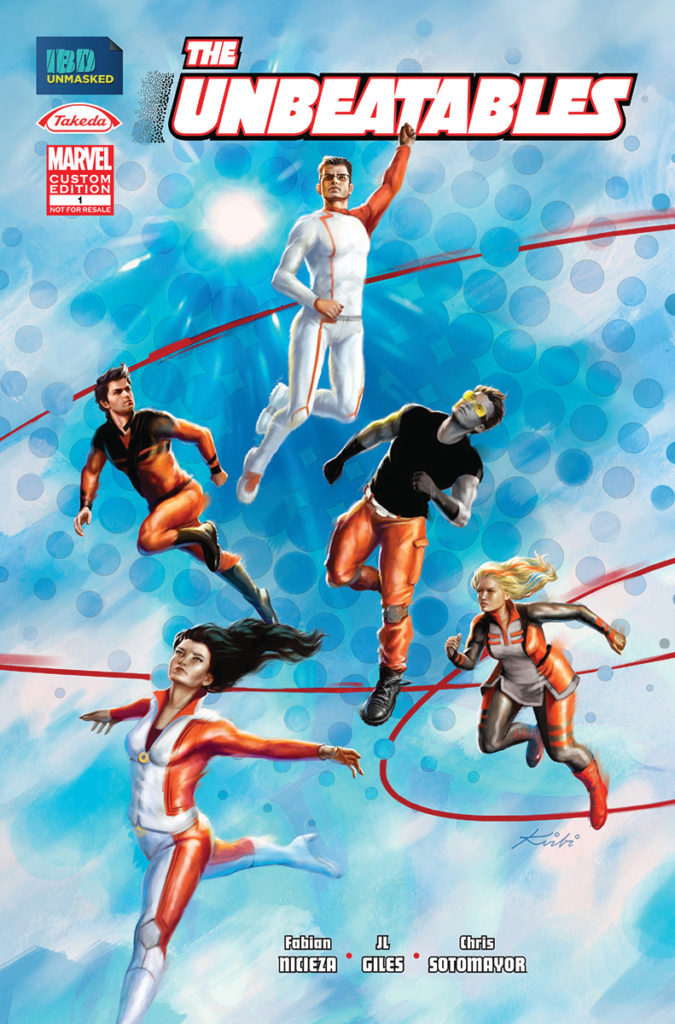 For more than five million people worldwide with inflammatory bowel disease (IBD), life can feel like a constant battle. IBD is an incredibly disruptive disease that can be isolating, mentally and physically exhausting and embarrassing, leading people with this disease to feel helpless, vulnerable, and misunderstood. Lack of true understanding of the condition can have a detrimental impact on a person’s life—complicating relationships with friends, family, and coworkers. Patients look at the disease as an intrusive enemy.
For more than five million people worldwide with inflammatory bowel disease (IBD), life can feel like a constant battle. IBD is an incredibly disruptive disease that can be isolating, mentally and physically exhausting and embarrassing, leading people with this disease to feel helpless, vulnerable, and misunderstood. Lack of true understanding of the condition can have a detrimental impact on a person’s life—complicating relationships with friends, family, and coworkers. Patients look at the disease as an intrusive enemy.
Through research, Takeda learned that people who feel “utterly helpless and vulnerable” are those who most need an escape that allows them to feel invincible. As a leader in gastroenterology dedicated to supporting people with IBD, they sought to raise awareness of the disease and honor the strength and resilience of the powerful patient community.
Takeda, with the support of Ketchum, partnered with people with IBD from around the world and the creative geniuses at Marvel Custom Solutions to develop IBD Unmasked, a first-of-its-kind global initiative depicting IBD patients and those who care for them as Super Heroes in a narrative that brought the issues of IBD into a compelling and inspirational new format.
The team also created a global website, IBDunmasked.com, to serve as the interactive hub for the patients and caregivers. It houses original graphic novel content, tips from healthcare professionals on how to discuss the disease with physicians, videos, infographics, and conversation guides for friends and family members. Takeda also developed its first unbranded Twitter handle—@IBDunmasked.
Polycythemia Vera Disease Education (Incyte Corporation, The Navicor Group)
 To emphasize the importance of identifying patients with uncontrolled polycythemia vera (PV), Incyte Corporation and The Navicor Group turned to a real patient with PV.
To emphasize the importance of identifying patients with uncontrolled polycythemia vera (PV), Incyte Corporation and The Navicor Group turned to a real patient with PV.
The advertisement features a close-up image of Aimee and her real-life journey which included seeing nine specialists, and eventually being diagnosed with PV after six years of searching for an answer. A double-exposure technique was used to visually capture the burden of disease that she has been carrying, as a proliferation of red blood cells is indicative of PV.
The advertisement also incorporates key statistics from the Myeloproliferative Neoplasm (MPN) Landmark Survey, a web-based patient survey sponsored by Incyte that assessed the disease burden in patients with MPNs. The campaign directed readers to PVStateOfMind.com to assess the survey findings, as well as a social media campaign with #connect4MPNs that was intended to bridge the dialogue between healthcare professionals and patients.
The campaign launched last September, which is MPN Awareness Month, and appeared in the September 29th issue of the New England Journal of Medicine.
The NINLARO® Empower Program (Takeda Oncology, Ashfield Healthcare, Atlantis Healthcare)
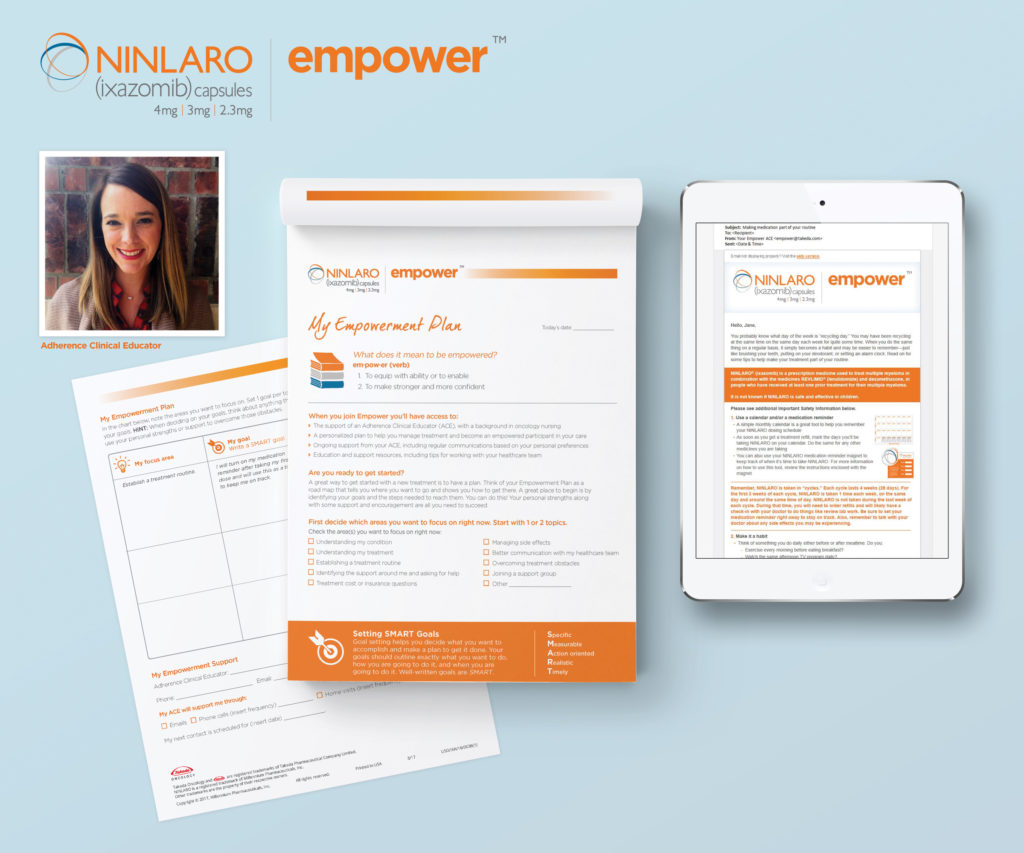 Takeda Oncology worked with Atlantis Healthcare and Ashfield Healthcare to develop the NINLARO® (ixazomib) Empower program. Empower is a Takeda Oncology program that provides personalized education and support for eligible patients who are taking NINLARO as part of their treatment plan. Empower supports patients by leveraging health psychology-based motivational and adherence messaging and is supported by Adherence Clinical Educators with a background in oncology nursing.
Takeda Oncology worked with Atlantis Healthcare and Ashfield Healthcare to develop the NINLARO® (ixazomib) Empower program. Empower is a Takeda Oncology program that provides personalized education and support for eligible patients who are taking NINLARO as part of their treatment plan. Empower supports patients by leveraging health psychology-based motivational and adherence messaging and is supported by Adherence Clinical Educators with a background in oncology nursing.
Using in-depth, health psychology–based research, Atlantis developed a Nonadherence Risk Assessment (NARA) tool to screen patients as they enroll in the program. The NARA tool helps to assess a patient’s relative risk of nonadherence (high or low) and identifies each patient’s primary beliefs and barriers to adherence, allowing the frequency of support and topics offered by the program to be personalized for each patient.
The NINLARO Empower program provides patients with access to an Adherence Clinical Educator (ACE). The Empower ACEs have backgrounds in oncology nursing and have been trained by Atlantis Healthcare in the use of behavior techniques to support patients in managing their adherence challenges. ACEs leverage these skills in combination with the results of the NARA tool to personalize the educational support for each patient. ACEs do not provide medical advice.
To start, ACEs work with patients to create an Empowerment Plan, which identifies specific goals, as well as, how patients prefer to receive communications. Throughout the program, ACEs may connect with patients over the phone and/or meet with patients in their homes to help them implement their customized plan and provide ongoing support, tools, and education.
The NINLARO Empower program has received positive feedback from program participants.
Takeda Oncology is the oncology business unit brand of Takeda Pharmaceutical Company Limited. All trademarks are the property of their respective owners.
Galderma CareConnect Patient Savings Program (Galderma Laboratories, L.P., Schaefer Advertising Co.)
 While most patient savings cards are confusing and ubiquitous, Galderma CareConnect (GCC) was strategically developed to simplify this patient-focused offering, making it easier for HCPs and pharmacists to have the confidence to recommend Galderma Rx products—when appropriate for treatment.
While most patient savings cards are confusing and ubiquitous, Galderma CareConnect (GCC) was strategically developed to simplify this patient-focused offering, making it easier for HCPs and pharmacists to have the confidence to recommend Galderma Rx products—when appropriate for treatment.
What makes this program so different? The GCC program is available at any licensed U.S. pharmacy, the full portfolio of Galderma Rx products is covered, and the pricing model is easy to understand with most prescriptions starting at $35 based on a patient’s commercially insured coverage. This led Galderma and Schaefer Advertising to develop the brand position around the theme, “Remarkably Simple.” The GCC website was created to be equally as simple with a warm design and easy-to-find videos, product information, tools, and a “download the card” section. For HCPs, the site offers easy access to a number of information tools relative to the program.
Thus far the Galderma HCP marketing initiative has been overwhelmingly successful, with 3,167 downloads of the patient savings card recorded so far. Additionally, 947,941 prescriptions have been filled using the program, resulting in an average out of pocket cost of $35.65.
Solutions at the Shelf program ACZONE (Allergan, Rx EDGE Pharmacy Networks, AbelsonTaylor)
 Most acne sufferers have tried 10 or more non-prescription products before seeing a dermatologist. That means they can often be found in the retail OTC and personal care sections looking for their next potential treatment, which makes the pharmacy aisle the perfect place to reach these patients. The Rx EDGE Solutions at the Shelf network functions similarly to other media networks, with brands selecting space based on where the largest group of potential patients can be reached. In this case, that is on pharmacy shelves near topical acne medications.
Most acne sufferers have tried 10 or more non-prescription products before seeing a dermatologist. That means they can often be found in the retail OTC and personal care sections looking for their next potential treatment, which makes the pharmacy aisle the perfect place to reach these patients. The Rx EDGE Solutions at the Shelf network functions similarly to other media networks, with brands selecting space based on where the largest group of potential patients can be reached. In this case, that is on pharmacy shelves near topical acne medications.
To raise awareness about new ACZONE Gel 7.5% among acne sufferers who are treating their symptoms with over-the-counter products, Allergan partnered with Rx EDGE on an information dispenser installed at the shelf in 3,000 retail pharmacies. The outside of the dispenser featured an eye-catching product visual in a die cut design. The headline/copy: “Acne Always on Your Mind? Less acne to think about starts with proven results.” was tailored to the concerns of the target audience and convincingly conveyed the brand’s value premise. Inserts inside the dispensers continued the “Acne Always on Your Mind?” theme and explained how ACZONE Gel 7.5% works, with before and after photographs to illustrate clearing results studied in males and females 12 and older. A savings offer was another key component of the communication strategy.
A quantitative matched panel methodology was used to measure results. The initiative helped increase total Rx sales volume in test versus control panels by over 7%. An added benefit: The program was also cost-effective, based on value of the program over the duration of treatment.
Digital Wallboard (Outcome Health)
 The Outcome Health Digital Wallboard is a 32-inch interactive touchscreen that gives physicians access to vivid 3D anatomical diagrams of all the systems of the body—as well as condition states—during consultations. Physicians can rotate, zoom, and annotate these diagrams during the consultation so that patients can better understand their conditions, procedures, and treatment options.
The Outcome Health Digital Wallboard is a 32-inch interactive touchscreen that gives physicians access to vivid 3D anatomical diagrams of all the systems of the body—as well as condition states—during consultations. Physicians can rotate, zoom, and annotate these diagrams during the consultation so that patients can better understand their conditions, procedures, and treatment options.
Additionally, the Digital Wallboard gives life sciences companies the opportunity to deliver treatment information into the critical moments of care through brand brochures with email capabilities, interactive banner advertisements, and the opportunity to repurpose existing advertisements on a digital platform.
In 2017, Outcome Health worked with the Accreditation Council for Continuing Medical Education (ACCME) so that physicians can earn CME credits by learning how to use the Digital Anatomy Boards. It also delivers health-related content for patients from leading organizations, including the American Cancer Society, the American College of Gastroenterology, the Mayo Clinic, and more than 80 other strategic partners.
Today, the Digital Wallboard is present in more than 40,000 consultation rooms across the country.
Lucentis Prefilled Syringe (Genentech, FCB Health)
 A new technological breakthrough from Genentech scientists provided a unique opportunity to re-launch Lucentis in order to reframe the brand experience and hold off fierce competition from a late-to-market biotech.
A new technological breakthrough from Genentech scientists provided a unique opportunity to re-launch Lucentis in order to reframe the brand experience and hold off fierce competition from a late-to-market biotech.
The new prefilled syringe offered several benefits beyond just easier dosing to the retinal specialists already familiar with Lucentis. Prior to this device, all drugs came in individual vials, which had arduous stocking and storing procedures, cumbersome drawing up processes, and an entire subset of staff dedicated to preparation of product. For the first time, a prefilled syringe could eliminate much of that burden.
But market research also showed that this new device would not be enough to sway prescribers—they still needed to see strong clinical support. So, FCB Health and Genentech developed the “Data inside/Efficacy Delivered” campaign to demonstrate the overwhelming clinical evidence that Lucentis has amassed inside a tiny new device. It showcases six clinical trials—each representing a crucial piece of the Lucentis research program—contrasted against a sleek device, to emphasize the elegant solution realized by Genentech scientist.
Additionally, each salesperson was equipped with a Demo Kit to provide hands-on experience with the new device. Wet labs were also set up at conventions across the country to accelerate rapid adoption by allowing customers to demonstrate the device on their own using a self-guided Interactive Demonstration presentation. Finally, a full non-personal campaign ran in parallel, reaching into markets that the sales people could not reach physically.
The launch campaign led to sales so overwhelming that demand is great. Plus, ad boards across the country have proven that retinal specialists believe in Lucentis again.
Onzetra (Avanir Pharmaceuticals, precisioneffect)
 Entering the overcrowded migraine market is challenging enough, but Avanir had the extra task of introducing a novel drug/device exhaler. Not only are physicians and patients accustomed to pills, but nasal delivery has been associated with sprays that often drip into the throat and leave a bad taste as well as uncertainty about whether an effective dose has been delivered.
Entering the overcrowded migraine market is challenging enough, but Avanir had the extra task of introducing a novel drug/device exhaler. Not only are physicians and patients accustomed to pills, but nasal delivery has been associated with sprays that often drip into the throat and leave a bad taste as well as uncertainty about whether an effective dose has been delivered.
To convince doubters that Onzetra Xsail is the right choice, Avanir and precisioneffect developed the “Gen Why?” campaign, starring a trio of migraineurs. These stylized patients voice their questions and express their dissatisfaction with a degree of clarity that demands attention. At the heart of the campaign is Rae’s plea for logic: “If my pain is here (points to head), why send relief here? (points to stomach).”
Questions like that have proved effective. Early sales exceeded projections, with Onzetra delivering sales triple that of its leading technology competitor. Additionally, brand awareness as measured by Awareness, Trial, and Usage (ATUs) has seen consistent rise quarter over quarter with both HCPs and patients.
LATUDA Adolescent Schizophrenia “Fragments” Campaign (Sunovion, AbelsonTaylor)
 Don’t mess with success. LATUDA has been widely successful for Sunovion ever since it was first approved to treat adults with schizophrenia in 2012. One reason for that success: The popular “Fragments” campaign developed with AbelsonTaylor that featured an adult patient with schizophrenia in fragmented pieces to represent the disease state in a highly emotional, yet meaningful and respectful manner. So, when Sunovion pushed for and received an expanded indication for LATUDA to also treat adolescents aged 13-17 with schizophrenia, it only made sense to once again go with what worked so well before.
Don’t mess with success. LATUDA has been widely successful for Sunovion ever since it was first approved to treat adults with schizophrenia in 2012. One reason for that success: The popular “Fragments” campaign developed with AbelsonTaylor that featured an adult patient with schizophrenia in fragmented pieces to represent the disease state in a highly emotional, yet meaningful and respectful manner. So, when Sunovion pushed for and received an expanded indication for LATUDA to also treat adolescents aged 13-17 with schizophrenia, it only made sense to once again go with what worked so well before.
Targeting mostly adolescent and child psychiatrists, the LATUDA Fragments campaign for adolescent schizophrenia features a patient “Ethan” and his mom. Close-up imagery conveys a distraught and distant teenager with his face fragmented through the appearance of torn paper over his face and body. The fragmentation evokes empathy for a patient torn apart by the devastation and alienation that schizophrenia can inflict. A post-treatment image with Ethan’s caregiver or mom shows fewer fragments to indicate symptom improvement. Not all fragments are removed as schizophrenia is not curable, but his mom still appears to be relieved at his progress.
Meanwhile, in patient-facing materials, the patient is not fragmented as research showed that patients and caregivers did not want to think of the patient in this way. However, the headline and subhead tell the story of schizophrenia tearing a patient apart, and how LATUDA can help put them back together.
In initial feedback, HCPs have expressed that they are familiar with the benefits of LATUDA and are pleased to have the opportunity of prescribing LATUDA to their adolescent patients with confidence.
“The Stork” (Ferring Reproductive Health, Concentric Health Experience)
 With the largest suite of branded fertility products on the market, Ferring Reproductive Health was looking for a campaign that could cut across the franchise to deliver a message of support and service. A stork is the instantly recognizable icon of fertility and the perfect image to serve at the center of campaign to deliver a message of success and consistency across key brands like Menopur and Endometrin.
With the largest suite of branded fertility products on the market, Ferring Reproductive Health was looking for a campaign that could cut across the franchise to deliver a message of support and service. A stork is the instantly recognizable icon of fertility and the perfect image to serve at the center of campaign to deliver a message of success and consistency across key brands like Menopur and Endometrin.
Positioned in the various HCP and patient scenarios like a trusty Labrador, the campaign successfully portrays Ferring as a reliable, constant, and loyal companion to physicians and patients along the IVF journey. The story begins at the very first moment a woman considers fertility therapy, ultimately connecting with a reproductive endocrinologist to learn about their options. From there, the Ferring stork continues its supportive role at home, in the lab, and right through the end of the journey with effective luteal support from Endometrin.
Since launch, the campaign’s site has received more than 3,000 new sessions and more than 2,500 new users—not to mention 8,000 more page views.
Tresiba® HCP Digital Launch Acceleration & Evolution (Novo Nordisk Inc., closerlook, inc., Underscore Marketing LLC)
 Novo Nordisk started preparing for the launch of Tresiba® years prior to its September 2015 approval, because they knew succeeding in an overcrowded diabetes marketplace wouldn’t be easy. Partnering with digital agency-of-record closerlook, inc., and media agency Underscore Marketing, Novo Nordisk developed a comprehensive digital strategy that proved successful every step of the way.
Novo Nordisk started preparing for the launch of Tresiba® years prior to its September 2015 approval, because they knew succeeding in an overcrowded diabetes marketplace wouldn’t be easy. Partnering with digital agency-of-record closerlook, inc., and media agency Underscore Marketing, Novo Nordisk developed a comprehensive digital strategy that proved successful every step of the way.
TresibaPro.com was approved by Novo Nordisk’s Promotional Review Board and launched within hours of FDA approval. In addition to the website and other digital materials developed by closerlook, Underscore Marketing spearheaded the paid-search campaign to promote awareness of the brand leading up to product availability.
Then, when Tresiba® became available to prescribe, TresibaPro.com was redeployed with more robust information from the approved label. Additionally, pharmacists were targeted with an email that drove traffic to a pharmacist-specific page on TresibaPro.com, which provided information on filling prescriptions and resources to help patients find savings.
After promotional campaign feedback was received from the FDA’s Office of Prescription Drug Promotion, TresibaPro.com was redeployed yet again—this time with full-branded messaging and a more robust pharmacist landing page. The team developed a KOL article and video series, Basal Insights, which was deployed on the site. The videos were also shared on key third-party platforms, including Medscape TV and Aptus e-Detail.
Through continued optimization of webpages, SEO, and SEM that ensured qualified traffic to the website and improved user experience, the phased campaign approach of the Tresiba® online initiative consistently outperformed industry benchmarks and internal baseline goals. This multi-phase digital launch achieved deep engagements with target HCPs and lead them on a journey from being a brand trialist to a brand advocate.
YONDELIS (Janssen, Team Chemistry)
 To make a splash with oncologists, YONDELIS® (brigatinib) went underwater. Inspired by the fact that YONDELIS® is a marine-derived drug, Janssen and Team Chemistry created the “Diver” campaign. The diver is symbolic of the derivation of the drug it represents as well as the hope it brings to doctors and patients who need it. While most chemotherapeutic agents are as devastating to the patient as the disease, YONDELIS® was the first new product in many years that was proven to prolong progression-free survival.
To make a splash with oncologists, YONDELIS® (brigatinib) went underwater. Inspired by the fact that YONDELIS® is a marine-derived drug, Janssen and Team Chemistry created the “Diver” campaign. The diver is symbolic of the derivation of the drug it represents as well as the hope it brings to doctors and patients who need it. While most chemotherapeutic agents are as devastating to the patient as the disease, YONDELIS® was the first new product in many years that was proven to prolong progression-free survival.
The campaign has propelled oncologists to try YONDELIS®. Through the clinically relevant website and widely disseminated educational programs that supported it, uptake and trial of YONDELIS® were enormous. Market research has shown that brand recognition and message recall exceeded 60% among target audiences and sales were 300% above forecast within six months post launch. Traffic on the website has climbed from 3,500 in the first month after launch to more than 7,500 per month at year’s end.
Illumina Content Engine (Illumina, Seismic)
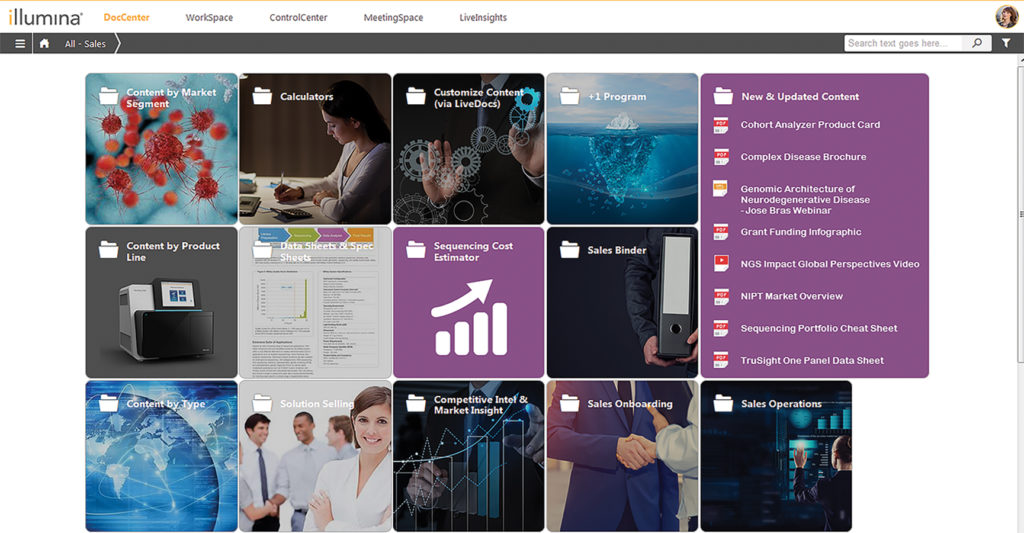 Illumina is a pioneer in genetic testing—MIT Technology Review named it the “World’s Smartest Company” in 2014. In 2016, they started an initiative that would bring their sales force, global channel partners, and customer support team to that same level of groundbreaking innovation. Working with Seismic and SiriusDecisions, they developed the Illumina Content Engine (ICE).
Illumina is a pioneer in genetic testing—MIT Technology Review named it the “World’s Smartest Company” in 2014. In 2016, they started an initiative that would bring their sales force, global channel partners, and customer support team to that same level of groundbreaking innovation. Working with Seismic and SiriusDecisions, they developed the Illumina Content Engine (ICE).
ICE was designed to centralize Illumina’s global content operations into a platform that would not only distribute content, but help accelerate the pipeline and improve alignment across functions and geographies. Seismic’s open API let them pull content from their website, ERP, and financial systems in real time, creating a single source for up-to-date content. Seismic’s LiveDocs technology enabled content creators to create PowerPoint wizards that let sales reps personalize presentations for each customer—automatically pulling the latest slides.
The platform’s LiveSend analytics track in real time when and for how long a prospect engages with a piece of content—such as digital brochures or pitchbooks—down to the individual page level. This allowed reps to see what information interested a prospect, leading to more productive interactions. Finally, Illumina worked directly with Seismic to develop an entirely new product, Desktop Sync. The new functionality automatically syncs content onto users’ local devices, ensuring that they can access materials regardless of internet connectivity.
The ICE initiative benefited Illumina twofold. It was easier for sales and support reps to discover content on their own, so everyone saved time and the onboarding process for new reps was easier and quicker. Plus, Illumina’s innovative approach to content has increased upsell opportunities, which is the ultimate goal of any sales program.
Ferring Pharmaceuticals Reproductive Health Franchise VR Sales Aids (Ferring Pharmaceuticals, Confideo Labs)
 The Ferring Pharmaceuticals Reproductive Health Franchise became the pharma industry’s first group to activate field reps using Samsung Gear VR. With the goal of providing their national field force with tools to better engage customers, Ferring partnered with Confideo Labs and its well-established VR platform, DoctorVirtualis.
The Ferring Pharmaceuticals Reproductive Health Franchise became the pharma industry’s first group to activate field reps using Samsung Gear VR. With the goal of providing their national field force with tools to better engage customers, Ferring partnered with Confideo Labs and its well-established VR platform, DoctorVirtualis.
The end result was an index of differentiated VR content from Menopur and Endometrin, including an immersive MOA experience that brought the “Two-Cell, Two-Gonadotropin Theory” to life by demonstrating in 3D how Menopur works to stimulate a woman’s ovaries to produce eggs. All VR media was pre-loaded to dedicated devices and packaged into premium kits by Confideo Labs. Each kit was branded with corporate logos, included a Samsung Gear VR, Samsung mobile device, headphones, and carry case.
According to Amy Cochran, Senior Sales Specialist, “It gave me more time in front of [a] provider and generated a discussion we normally wouldn’t have had. In a field where there is very little new data coming out, the VR detail aid gives our sales team a leg up.”
Intouch Solutions Goes #ALLin (Intouch Solutions)
 Inspired by their purpose statement, “Hacking Healthcare for the People,” Intouch Solutions decided to go #ALLin. They outfitted an Airstream trailer to function as a mobile studio and took it on a 3,800-mile journey around the country to spark health discussions and capture stories of patients and caregivers in a variety of disease communities.
Inspired by their purpose statement, “Hacking Healthcare for the People,” Intouch Solutions decided to go #ALLin. They outfitted an Airstream trailer to function as a mobile studio and took it on a 3,800-mile journey around the country to spark health discussions and capture stories of patients and caregivers in a variety of disease communities.
Intouch attended events supporting multiple sclerosis, Crohn’s disease, diabetes, arthritis, leukemia, and more, and captured more than 30 on-camera interviews. They also heard hundreds of inspiring stories, and even when things got emotional, people kept sharing.
As they listened, an often-overlooked group began to make its voice heard—caregivers. So, Intouch took its campaign a step further by partnering with the nonprofit Digital Health Coalition for proprietary research on the impact of caregiving. They discovered that, in the United States, friends and relatives who provide informal care for the elderly spend an estimated $522 billion a year. And that doesn’t even take into consideration the time commitment caregivers must make. A complete summary of the results was published in a whitepaper, “Caregivers: The Hidden Healthcare Provider.”
Through all of this, Intouch staff members documented their journey on TeamALLin.com, as well as via blog posts, social media, email updates and press releases. Ultimately, the initiative generated more than 2,000,000 paid and earned media impressions, and 67% of employees surveyed reported the #ALLin program achieved its objective.
DDD and Me (Brightworks Interactive Marketing)
 After 11 years in business, Brightworks Interactive Marketing had never done a self-promotion campaign. However, with a desire to build upon a small, but successful, set of U.S.-based clients, the Toronto-based agency decided it was time to develop something that would help them stand out among other agencies.
After 11 years in business, Brightworks Interactive Marketing had never done a self-promotion campaign. However, with a desire to build upon a small, but successful, set of U.S.-based clients, the Toronto-based agency decided it was time to develop something that would help them stand out among other agencies.
The result: A PSA for “Digital Discombobulation Disorder.” Mixing humor with insight, they developed a guidebook direct mail piece that addressed how brand managers today are often left feeling lost, anxious, and discombobulated when trying to deliver the right digital strategy—or even just trying to define what it means to be innovative in the digital space. The guidebook also offered a solution with Brightworks’ unique approach to solving discombobulation as well as an offer for a free digital brand assessment.
For the agency’s first mailing of 87 pieces, they received a 6% response rate—well above the average for direct mail. Furthermore, many of the respondents received the piece from a colleague, meaning people were walking around the office saying, “Check this out!”
Pfizer: Pioneering Industry Firsts with Facebook (Pfizer, Create NYC)
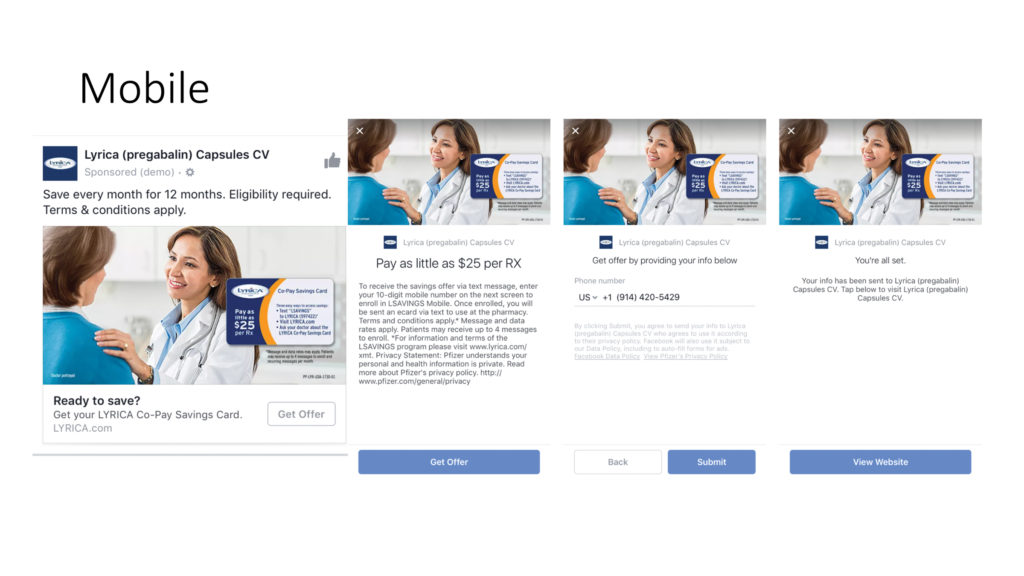 Even though pharma’s adoption of social media has been slow, the industry’s presence on social has steadily increased over the years. So, it is no longer about just being on social media, but doing something truly unique to better serve patients. Launching the first-ever newsfeed “lead” ads that deliver branded copay savings cards would certainly qualify.
Even though pharma’s adoption of social media has been slow, the industry’s presence on social has steadily increased over the years. So, it is no longer about just being on social media, but doing something truly unique to better serve patients. Launching the first-ever newsfeed “lead” ads that deliver branded copay savings cards would certainly qualify.
Working with advertising agency Create NYC, Pfizer’s Marketing Center of Excellence (MCoE) Digital team developed these unique newsfeed ads that could deliver copay savings cards to appropriate patients via text message (SMS) without the consumer ever having to leave the Facebook environment. To ensure this process was compliant every step of the way, Pfizer’s MCoE team worked directly with Facebook to develop an ad unit framework that would accommodate all regulatory requirements.
Pfizer then piloted the initiative with Lyrica (pregabalin) and Chantix (varenicline)—two brands with patient bases aligning to Facebook users. The branded content was specifically optimized for mobile. The ads would first appear in a user’s newsfeed. When the consumer clicks to receive the offer, it prompts an information collection form to collect phone number and opt-in within the Facebook platform. Lastly, the consumer receives a final unbranded text message with activated copay card information.
Metrics went beyond what Pfizer thought was possible, surpassing benchmarks of any existing digital tactics. Lyrica (pregabalin) lead ads generated a reach of 5.5M within a 10-day period, and the Chantix (varenicline) lead ads generated a reach of 4.9M also within a 10-day period. Furthermore, Pfizer experienced a click-through rate 4x the internal benchmark, with Lyrica (pregabalin) specifically seeing a 7x higher rate.
Can’t Silence a Cure for AIDS (Research Foundation to Cure AIDS, Havas Life New York)
 The “AIDS Movement” is rooted in protest. In the ’80s, activists took to the streets to make their voices heard and to demand treatment. But now, 35 years later, when people think of AIDS, unfortunately, they still think only of treatment. It was time once again to stand up, but this time to demand a cure.
The “AIDS Movement” is rooted in protest. In the ’80s, activists took to the streets to make their voices heard and to demand treatment. But now, 35 years later, when people think of AIDS, unfortunately, they still think only of treatment. It was time once again to stand up, but this time to demand a cure.
The “Can’t Silence a Cure for AIDS” campaign involved a new brand voice, look, and architecture for the Research Foundation to Cure AIDS (RFTCA) website, which told the in-depth story of the development of a cure and RFTCA’s mission. Meanwhile, the #SHOUT CURE AIDS social campaign further spread the word through a Facebook community and user-generated content on Twitter and Facebook.
Additionally, multiple, inclusive grass roots meet ups gave voice to people from today’s AIDS community—many of them non-traditional and under the radar—including caregivers, frontline researchers, artists, prison system experts, women, and mothers.
In just weeks, the campaign garnered approximately 2,000,000 social media impressions and broke records (versus norms) for time spent on the newly created RFTCA website.
The Daiichi Sankyo Pain Trends Report (Daiichi Sankyo, inVentiv Health Managed Markets)
 Acute and chronic pain are a reality for millions of Americans. In order to explore and share different healthcare stakeholders’ viewpoints on key topics and issues relating to pain management, Daiichi Sankyo embarked upon developing the Pain Trends Report.
Acute and chronic pain are a reality for millions of Americans. In order to explore and share different healthcare stakeholders’ viewpoints on key topics and issues relating to pain management, Daiichi Sankyo embarked upon developing the Pain Trends Report.
Data for the Pain Trends Report was obtained by surveying a large and diverse group of healthcare stakeholders, including payers, physicians, pharmacists, and employers, and by seeking input from experts organized and compensated by Daiichi Sankyo, Inc. With a chapter dedicated to each stakeholder, the Report provides a wide-ranging overview of various topics relating to the pain landscape from the point of view of those directly involved in pain management. The Report revealed stakeholders’ perceptions of unmet needs, areas of concern, and predictions of future trends in the pain category.
A full campaign was executed on behalf of Daiichi Sankyo, Inc. to effectively roll out the Pain Trends Report. It included nonpersonal communication in the form of website banners, a journal advertisement, and conference collateral at AMCP’s Annual Meeting, where Daiichi Sankyo received resounding praise for its Science & Innovation Theater presentation. An additional AMCP webinar was also conducted in order to provide the public with highlights and more detailed findings from the Report.
The Pain Trends Report has been invaluable in communicating relevant information about pain management to a broad cross section of healthcare stakeholders. Daiichi Sankyo looks forward to publishing the second edition of the Pain Trends Report in 2018.
Hearing Voices of Support (SARDAA, The Bloc)
 People with a schizophrenia-related disorder often become isolated and forgotten. Their stories are rarely told. Hearing Voices of Support is an initiative created to help change that.
People with a schizophrenia-related disorder often become isolated and forgotten. Their stories are rarely told. Hearing Voices of Support is an initiative created to help change that.
Eighteen brave people affected by schizophrenia-related disorders were captured on video, talking about the voices they hear (auditory hallucinations) and the words of support they like to hear. Sharing stories on a website, through social posts, and on a Facebook page—with comments of support from across America and around the world—the initiative grew.
A media company offered a Times Square billboard and Sara Bareilles issued a gratis license of her song “Brave,” which a flash mob sang in Times Square. Then in May, for Schizophrenia Awareness Week, the video interviews were used in an interactive art installation that put people with schizophrenia-related disorders in the spotlight. It was reminiscent of auditory hallucinations but with a twist—the voices were positive. In a survey conducted at the installation, people indicated their perception had been changed, with 80% now wanting to do more to help those affected by schizophrenia. The initiative is gathering momentum and helping to change lives.
TECFIDERA Reimagine MySelf (Biogen, Patients & Purpose)
 Overall awareness of TECFIDERA was already high, over 70% in fact. So, when it came time to develop a new campaign to promote the benefits of the treatment option to MS patients, Biogen and Patients & Purpose needed to do much more than just raise awareness about the brand. They needed to inspire.
Overall awareness of TECFIDERA was already high, over 70% in fact. So, when it came time to develop a new campaign to promote the benefits of the treatment option to MS patients, Biogen and Patients & Purpose needed to do much more than just raise awareness about the brand. They needed to inspire.
The Reimagine MySelf campaign brought together patients and celebrities to highlight all the ways people can reimagine life with MS. Reimagine MySelf—sponsored by TECFIDERA—was anchored by a dynamic and engaging branded website, with articles and videos from various brand ambassadors. That includes actress Jamie-Lynn Sigler, who shared in January 2016 that she had been living with relapsing MS for 15 years and was managing her disease with TECFIDERA. As part of the campaign, in an intensely personal video, Jamie-Lynn revealed how she balances the demands of motherhood, intimacy, work, and friendship with the realities of living with MS. She also touched on how TECFIDERA fits into her reimagined life.
By enlisting her as the celebrity patient ambassador for Reimagine MySelf, Biogen was able to leverage her reputation in the MS community to command national attention for the program. After just one month, Jamie-Lynn’s video had been viewed more than 5,000 times on YouTube and ReimagineMySelf.com. But more than just attention, her involvement in the campaign has also brought inspiration to thousands of people—and boosted awareness of MS. As one patient said, “Thank you, Jamie-Lynn, for being brave enough to talk about this!”
LATUDA “Maya’s Story” (Sunovion, Team Life)
 LATUDA is the No. 1 branded product approved to treat bipolar depression. However, research revealed that competitors’ ads had caused confusion—the campaigns did not explain the various types of depression. This created an opportunity for Sunovion and Team Life to help people with bipolar depression understand that there are many forms of depression and that bipolar depression should be treated differently.
LATUDA is the No. 1 branded product approved to treat bipolar depression. However, research revealed that competitors’ ads had caused confusion—the campaigns did not explain the various types of depression. This created an opportunity for Sunovion and Team Life to help people with bipolar depression understand that there are many forms of depression and that bipolar depression should be treated differently.
Research also showed that sufferers were simply looking for treatment to help them better enjoy everyday activities, which lead to the “Little Moments” campaign. LATUDA’s story unfolds in the first-person narrative with the sufferer, named Maya, struggling with day-to-day living. As she seeks help from her doctor, she is prescribed LATUDA. With this medication, she is able to begin to get back to living her life with her husband and child, friends, co-workers, and even her dog—enjoying life’s little moments.
The campaign has helped to educate patients and caregivers about LATUDA—encouraging doctor discussions about LATUDA as a treatment option for bipolar depression. Through this relatable campaign, the team has grown unaided awareness of the brand to an all-time high of 33% vs. 11% for the previous year, and aided awareness at 50% vs. 32% compared to the previous year.




